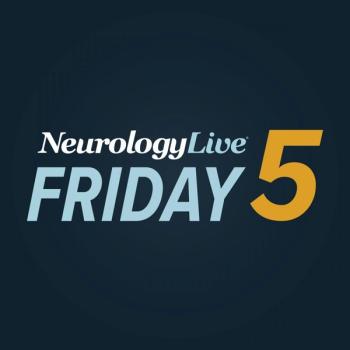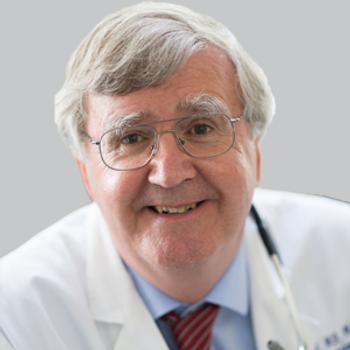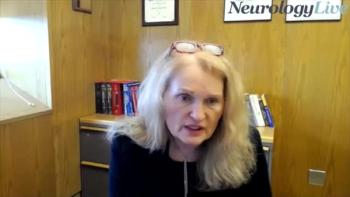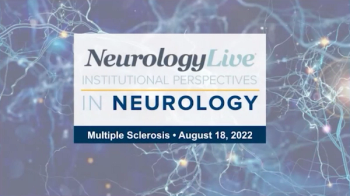
Catch up on any of the neurology news headlines you may have missed over the course of the last month, compiled all into one place by the NeurologyLive® team.

Catch up on any of the neurology news headlines you may have missed over the course of the last month, compiled all into one place by the NeurologyLive® team.

Here's some of what is coming soon to NeurologyLive® this week.

Treatment with rimegepant, an FDA-approved treatment for acute and preventative migraine, resulted in decreases of more than 30% in monthly butalbital prescription fill and reductions of more than 25% in mean milligrams dispensed.

Test your neurology knowledge with NeurologyLive®'s weekly quiz series, featuring questions on a variety of clinical and historical neurology topics. This week's topic is epilepsy and seizure disorders.

The director of medical outpatient services at the Kennedy Krieger Institute provided insight on how clinicians have typically assessed children who fail to meet milestones, and how that might change with new guidelines. [WATCH TIME: 3 minutes]

Compared with placebo, vamorolone-treated patients showed significantly better outcomes on several secondary and exploratory end points, such as the NorthStar Ambulatory Assessment and time to climb 4 stairs.

Neurology News Network for the week ending September 3, 2022. [WATCH TIME: 4 minutes]

Take 5 minutes to catch up on NeurologyLive®'s highlights from the week ending September 2, 2022.

Evening physical activity was associated with lower restless legs syndrome severity, while more time spent in the morning on physical activity, specifically light physical activity, was associated with worse sleep quality.

The professor of psychiatry and cell biology at NYU Langone provided commentary on new findings which challenge traditional theories on the root of Alzheimer disease and how it is targeted. [WATCH TIME: 17 minutes]

Using Strong et al’s classification criteria, the percentage of SOD1+ and SOD1- patients with altered cognitive and/or behavioral profiles were similar; however, cognitive and behavioral impairment differentiated between groups.

The neurologist at the University of Colorado offered an overview of the State of the Science Summit that was held on August 18, 2022, featuring a panel of expert clinicians. [WATCH TIME: 5 minutes]

After switching from idursulfase to Denali’s DNL310, patients demonstrated mean declines of more than 80% for both heparan sulfate and dermatan sulfate biomarkers at week 49 of treatment.

The associate professor of neuropsychology at the University of Miami Miller School of Medicine discussed how a new innovative tool can further characterize cognitive status and improve evaluation of agents in development for Alzheimer disease. [WATCH TIME: 2 minutes]

Milvexian at doses of 25 mg to 100 mg twice daily showed an approximate 30% relative risk reduction of ischemic stroke compared with placebo.

Even after adjusting for multiple confounding variables including recognized factors associated with cardiovascular diseases, PTSD plus insomnia remained an independent factor of major adverse cardiovascular events.

In comparison to nonresponders, those in the active treatment group who did respond well exhibited longer disease duration and lower baseline levodopa equivalent dose.

The director of medical outpatient services at the Kennedy Krieger Institute discussed the changes and implications of new CDC guidelines on developmental milestones for growing children.

The 0.2% topical gel, branded as Hyftor by Nobelpharma America, was approved in March 2022, and is indicated for individuals aged 6 years and older with TSC. It is the first topical therapy approved for this population.

The Rafa Laboratories 10-mg midazolam autoinjector is the first in market product of its kind, adding another option for the rescue of individuals with status epilepticus, a condition with crucial time implications in treatment.

Younger patients were more likely to have epilepsy-related imaging abnormalities, while older patients were more likely to have incidental abnormalities or those with an unknown relationship to epilepsy.

The director of medical outpatient services at the Kennedy Krieger Institute provided insight on the recently announced revisions to the “Learn the Signs. Act Early.” CDC developmental milestones for children. [WATCH TIME: 4 minutes]

In a subanalysis of individuals with acute ischemic stroke with tandem lesions, treatment with the Penumbra system resulted in successful revascularization in almost 90% of patients.

Those who had used tobacco at any time demonstrated multiple significantly lower whole-brain measures than nonusers, including total cortical surface area, cortical volume, and total intracranial volume.

The chair of the nephrology division at Mayo Clinic provided context on recent findings linking inflammation and neurovascular damage in women with a history of severe preeclampsia, and how the community may react. [WATCH TIME: 2 minutes]

Results showed significantly smaller bilaterally gray matter volumes in Parkinson disease compared with controls, but no differences in brain-first or body-first subtypes on asymmetric atrophy.

Here's some of what is coming soon to NeurologyLive® this week.

Chaired by Augusto Miravalle, MD, of the University of Colorado, the presentations also feature Barry Hendin, MD, of the Center for Neurology and Spine; Ilana B. Katz Sand, MD, of Mount Sinai; Brett Fling, PhD, of Colorado State University; and Gavin Giovannoni, MBBCh, PhD, of Queen Mary University of London. [WATCH TIME: 1 hour, 59 minutes]

Plasma GFAP was increased in both presymptomatic and symptomatic mutation carriers compared with noncarriers, and in symptomatic compared with presymptomatic carriers.

Test your neurology knowledge with NeurologyLive®'s weekly quiz series, featuring questions on a variety of clinical and historical neurology topics. This week's topic is Parkinson disease and movement disorders.